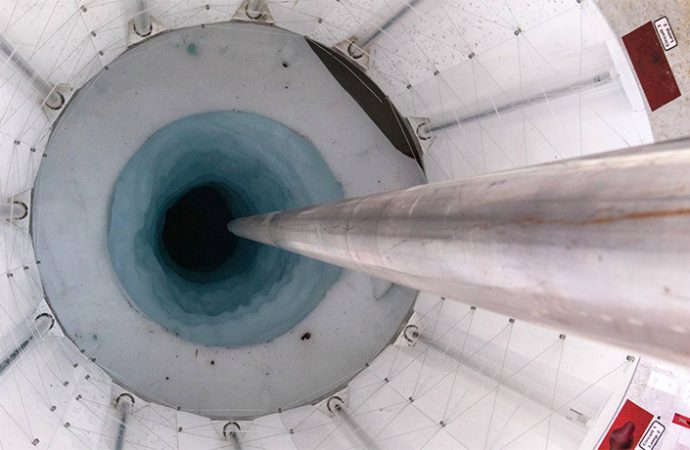Mud from Lake Mercer revealed crushed critters that resembled spiders and worms
Much to their surprise, scientists in Antarctica have uncovered what appear to be remnants of tiny animals in mud dredged from a lake that has been covered by a thick mantle of ice for thousands of years.
The researchers on this expedition — known as the Subglacial Antarctic Lakes Scientific Access, or SALSA — are the first to sample Lake Mercer, a body of water about 600 kilometers from the South Pole. After drilling about a kilometer through the ice in late December, researchers lowered instruments that brought water and sediment up to the surface.
Looking at these samples under a microscope, the team found “some things that looked like squished spiders and crustacean-type things with legs … some other things that looked like they could be worms,” says expedition member David Harwood, a micropaleontologist at the University of Nebraska–Lincoln. The researchers also spotted what appeared to be the vestige of a famously durable microscopic critter called a water bear. Examining the DNA of these remnants will help researchers ID them more precisely.
This find, first reported online by Nature on January 18, “is really intriguing,” says Slawek Tulaczyk, a glaciologist at the University of California, Santa Cruz who is not part of the SALSA team. Until now, scientists hadn’t considered such Antarctic lakes like Mercer to be suitable environments for organisms larger than microbes.
When researchers in 2013 sampled Lake Whillans, the only other ice-lidded lake in Antarctica that scientists have drilled into, “we didn’t uncover any evidence of anything more complex than a microbe,” says SALSA team member Brent Christner, a microbiologist at the University of Florida in Gainesville. “We had a similar expectation here.”
Tale of two lakes
Newly uncovered animal remnants at Lake Mercer came as a particular surprise to researchers because samples drawn from a neighboring lake, Lake Whillans, contained nothing more than microbes.

E. Otwell
It’s still unclear if the newly unearthed animal carcasses were left behind by creatures that actually lived in Lake Mercer, Tulaczyk says. Ice or water may have carried these fragments in from the ocean or lakes further upstream in the Transantarctic Mountains. Carbon dating the samples could help pinpoint their age, which may provide a clue as to how and when these miniscule animal carcasses arrived in Lake Mercer, he says.
If any of these animals were Lake Mercer–dwellers, it’s possible that some of them may still be kicking around down there, Harwood says. “It’s interesting to think that life can exist in really extreme environments” such as an Antarctic lake that has been cut off from both the ocean and atmosphere for thousands of years, Harwood says. “If life is still persisting there, that’s important for our thoughts about what we might find out in space.”
Source: Science News

































Leave a Comment
You must be logged in to post a comment.